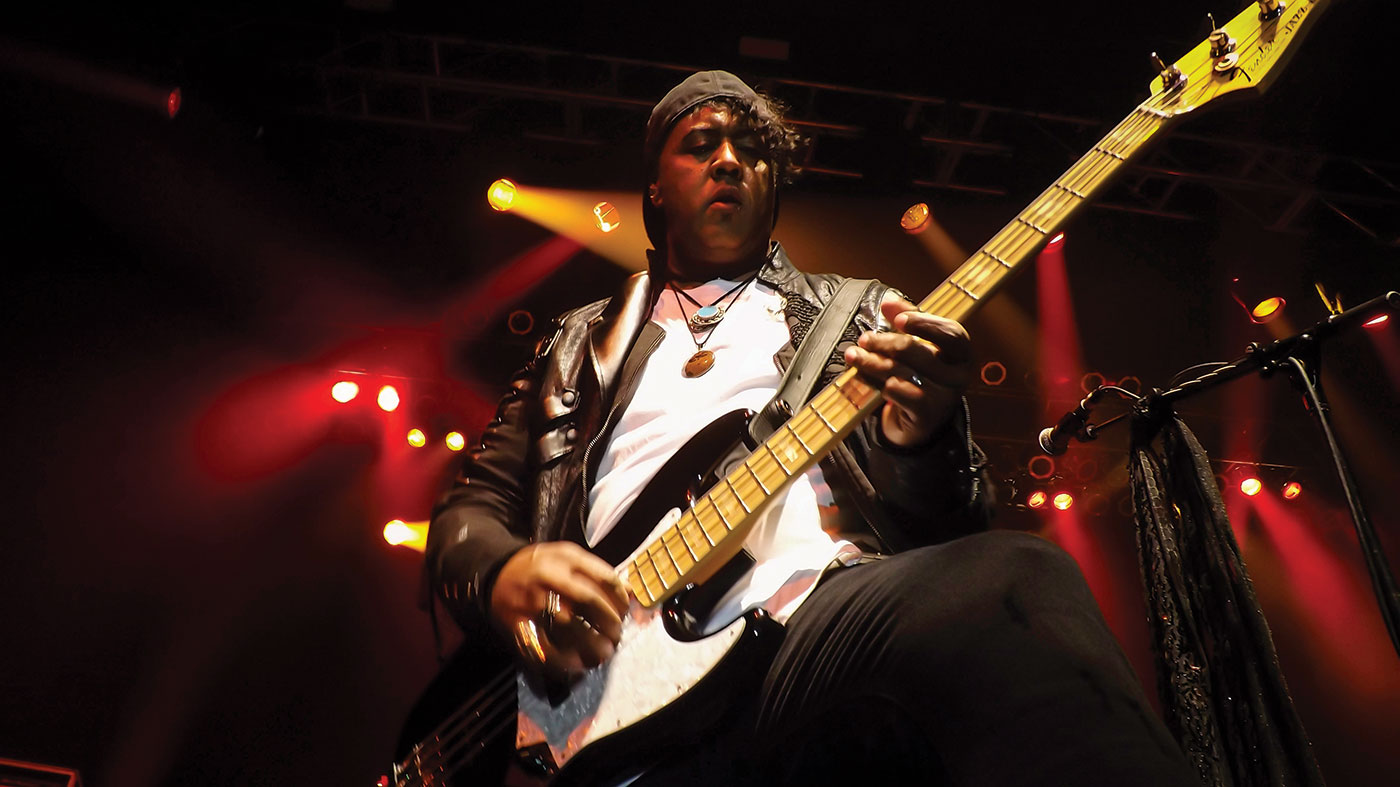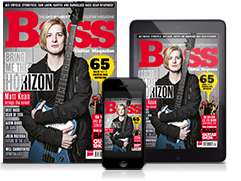Revolution bassist Mark Brown: “Prince would fine us $1,500 for making a mistake!”
BrownMark dishes the dirt on Prince's tone tricks and 12-hour jam sessions

Mark Brown was the bassist with the Revolution, sometime backing band for the late legend Prince, under his stage name of Brown Mark. Jamie Blaine meets the funk maestro.
They were the baddest band on the planet - a menagerie of misfit players fusing P-Funk, arena rock and new wave pop to form an entirely new sound. Eclectic, yet accessible, imitated but impossible to replicate; Prince never sounded more electric than with the Revolution. Perhaps because it was the only time our 20th-century Mozart was truly in a band.
And on bass? Minneapolis native Brown Mark (born Mark Brown) who brought his own innovative blend of percussive funk and rock aggression to propel the Purple One through the multi-platinum era of 1999, Purple Rain, Around The World In A Day and Parade. With Prince’s passing in 2016, the Revolution reunited to tour and play the classics as only they can. BGM crashed a rare-cuts soundcheck to query the original Revolution bassist…
Prince told Rolling Stone, "If I didn’t have Mark, I wouldn’t put bass on my music."
“That quote shocked me. I think what he meant is that you have players who follow patterns, technicians who know every scale, but I’m a feel player. I studied Prince - it was hard to figure out what he was looking for.”
Which was?
“Mostly a combo of Bootsy and Larry Graham. Not just the plucking thing, but the rumble beneath to fill the holes the drummer can’t.”
Want all the hottest music and gear news, reviews, deals, features and more, direct to your inbox? Sign up here.
The song When Doves Cry famously lacks bass, but on Purple Rain Live, you play on it.
Lots of bassists try to be too clean, but I was very dirty, just as big of a roar as I could get
“It’s straight-up ghost notes. Prince said, ‘Wait until after the third verse and come in with something’, so I started rumbling on all four strings. You take your thumb and it’s almost like a rhythmic chop, syncopated with your hand. Lots of bassists try to be too clean, but I was very dirty, just as big of a roar as I could get, and then fine-tune that into a beat. All that while doing choreography in heels! That’s just dedication.
“He would fine us, like, $1,500 for making a mistake! When I signed up, I asked, ‘What time is practice?’ Prince took off his glasses and said, ‘Mark, we don’t practise. We rehearse. Practice is what you do at home.’ He always said you have to live it and breathe it - and then you become it.”
When did you start playing?
“I got a Sears guitar when I was six and broke the top two strings taking it out of the box. There was a song out called Let’s Do It Again by the Staple Singers and somehow, I could understand bass patterns immediately.
“But I didn’t get serious until I was 14 and bought a Kingston bass. It was ugly and the action was brutal, but learning on high action had a lot to do with forming my style. Finally, I got an Ibanez and started building a rep around town. Eventually, Prince asked me to join.”
Stoned
You opened for the Rolling Stones in ‘81, right?
“That was my first gig! We got as far as the song Jack U Off and it was a sea of middle fingers, man. Some guy threw a grapefruit and knocked my guitar out of tune. Our idea of rock music and theirs were two different things.”
Where did the Revolution’s rock influence come from?
Here’s a secret about Prince’s sound: he liked everything mixed high, so the low presence would cut through
“The black radio station in Minneapolis signed off at sunset, so we grew up listening to a lot of Pink Floyd, Zeppelin and Frank Zappa. When I did get more exposure to funk I was all about Earth, Wind And Fire, the Bar-Kays, L.T.D., and Parliament, of course.”
What were you playing back then?
“A Fender Jazz through an Ampeg SVT, but the amp didn’t growl enough so I went to two Crowns and custom boxes with four 10s and an 18. I used separate preamps, a Lexicon phaser and parametric EQ. Here’s a secret about Prince’s sound: he liked everything mixed high, so the low presence would cut through. Eventually I migrated to an Alembic Spoiler and by the Parade album (1986), I had a Roland interface built in so I didn’t have to play that weird-looking Roland bass thing.”
The Revolution’s songwriters Wendy Melvoin and Lisa Coleman came up with some ornate chord changes. How did you work with those?
“The girls have a very abstract view of progressions, but they handled the melodic structure - and that cleared the way for me to control the bottom-end and not have to play a line with melody. Prince didn’t want you to figure out what we were playing. He liked that it was a mystery.”
Prince was quite the bassist himself.
“That guy was mean! He would grab that bass and we would go at it, because we had different styles. I’m like a sponge. I’ll absorb your style and take everything you have. But that’s what he wanted: someone who could play like him.
“Prince loved to jam in B flat. Sometimes we’d go from 10am to 10 at night - I’d be rumbling [the bass] with one hand and making a sandwich with the other. As long as I didn’t lose the pocket, he didn’t care.”
How are you recreating that classic sound these days?
“My sound is simple. I learned this from Prince: get rid of all active electronics. I play a passive Fender Geddy Lee Jazz with heavy-gauge Ernie Ball Cobalt flatwounds on the E, A and D strings. Flatwound strings are funky. My G string is a medium round-wound GHS Boomer for that bright pluck. The only thing fancy is a Boss Super Octave so I can go low. Bass in your face!”

